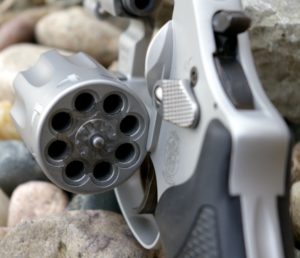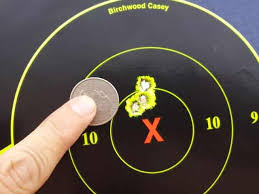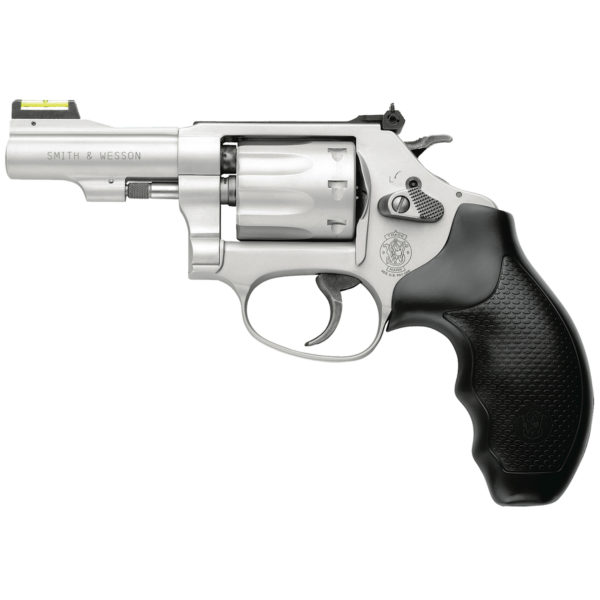There are a few topics that are so controversial and that they should not be discussed at the holiday dinner table. Those topics are politics, religion, and survival guns (including caliber and type of gun) you should carry. The debate typically ranges from stopping power vs. weight of the extra ammunition, accuracy of the weapon vs. size, and ease of carrying and versatility of use to practical applications. From my 40+ years of experience in both the survival and firearms arena, I can debate on either side of whatever position I want to take, but personally, I’ve decided upon my preference regarding this topic.
If we narrow the scope of the conversation to a “SURVIVAL” situation, you have to consider some very specific factors. Some of those factors are as follows:
• Carrying weight of the gun
• Weight of the ammunition
• Purpose of the weapon
• Physical size considerations
• Reliability of the weapon
These factors helped me to narrow my preferences to the weapon and caliber that make the most sense for me to carry into the woods. However, like most things, you do have to make compromises and decide what’s most important to YOU before making a final decision. Here was my thought process on the topic . . .
Hand Gun or Rifle
For hunting at any distance a rifle is undoubtedly the weapon of choice and in a survival situation you most likely will be doing some hunting but if we look at the totality of our circumstances being in a SURVIVAL situation with limited space to carry things, a small backpack or possibly no backpack at all, we have to take into account the size and weight of the weapon we choose. For those 2 factors alone, size and weight if I had to decide on one weapon, a rifle or a hand gun I would choose the handgun. The handgun is also more maneuverable , less likely to catch on branches if I need to move unexpectedly and quickly, and easier to conceal if that becomes a factor.
Type of Hand Gun
Now for the next question: “What is the gun going to be used for?” The answer will lead us to the right gun for that situation or situations.
For personal protection at home or on city streets, my preference is my 1911 .45 loaded with hollow point rounds.
For conceal-ability, I like my Walther PPK.
However, for a SURVIVAL situation, taking into account all the factors of the carrying weight of the gun, weight of the ammunition, purpose of the weapon, physical size considerations, and reliability the weapon, my choice is the Smith & Wesson Model 317 Pack Gun fitted with Crimson Trace Laser Grips.
 This gun is an eight-shot revolver. Revolvers have the reputation of being very reliable (as opposed to automatics, which many jam occasionally because of more moving parts). The extra width of the cylinder is not a factor, since I’m not trying to conceal the gun. In addition, the gun is made of titanium and aluminum, making it very lightweight, weighing just 10.8 oz. (306 grams), hardly even noticeable in my pack.
This gun is an eight-shot revolver. Revolvers have the reputation of being very reliable (as opposed to automatics, which many jam occasionally because of more moving parts). The extra width of the cylinder is not a factor, since I’m not trying to conceal the gun. In addition, the gun is made of titanium and aluminum, making it very lightweight, weighing just 10.8 oz. (306 grams), hardly even noticeable in my pack.
In addition, I decided to retain the “Hi-Viz” front sight and adjustable rear sight, but also added a Crimson Trace Laser Grip, giving me a laser sight for instant target acquisition. Yes, I understand the reliance on batteries to keep the laser operating, but with the original iron sights still functioning as a backup to the laser sight and an extra set of #357 button batteries in my pack, I feel I’m all set to go.
As for accuracy, that depends more on the user of the gun than on the gun itself, but with mine resting on a sandbag, I can consistently get a 2”-3” grouping at 25 yards, which is more than satisfactory for a small .22 handgun.
Caliber of the Handgun
As I mentioned before, on the street or in a combat situation, I prefer a .45 caliber handgun. My personal concealed carry weapon is a Walter PPK which was the first gun I ever bought 40 years ago. I was enamored with the legendary spy James Bond and his .32 (.765 mm) Walther PPK in his early movies, so much so that I just had to have one.
However, for SURVIVAL, my choice of caliber is the .22. The math makes the decision simple. For one pound of weight, you can carry 133 rounds of .22 and only 21 rounds of .45. That’s a whole lot more .22 ammunition than .45 for the same weight!
The .22 round also has the advantage of coming in a variety of configurations. The most common are the high-velocity .22 long rifle (LR) rounds, which give you the most knock-down power

.22 Long Rifle vs .45 ACP
possible. This is due to the small bullet’s fast speed (1,250 feet/second or faster). The rounds that I find the most useful are the sub-sonic .22 rounds (1,050 feet/second), which gives you as much speed as possible without breaking the sound barrier (the speed of sound is 1,125 feet/second). By keeping the bullet velocity under the speed of sound, you eliminate the “sonic boom” of the bullet that gives you the familiar “crack” sound you hear when a .22 rifle is being shot.
The .22 also comes in what is known as a “CB” round. This bullet has much less gunpowder in the shell and consequently, it produces much less noise when shot. The downside is that the bullet speed is only 720 feet/second. These CB rounds are great if you do not need a high bullet speed to accomplish your objective and want to do it as silently as possible.
As for “stopping power,” the .22 does not have the mass or momentum of a larger caliber, which is why shot placement is critical when you’re using it. The good news is that a .22 caliber gun has so little recoil that precise shot placement is much easier to accomplish than with a larger caliber. Remember, you can always get hollow point .22 LR shells if you want to maximize the damage inflicted on your target. And for the record, yes, a .22 LR round can penetrate a human skull.
Personal Protection
Last but certainly not least, we come to issue of personal protection. Most everyone would agree that a .22 is not considered the ideal personal protection firearm caliber. While this may be true, allow me to ask a pointed question.
If you were walking down a deserted street and a robber confronted you, pointed a .22 caliber handgun at your head, and said, “Gimme your wallet,” what would you do? Would you pull out your wallet and give it to him, or would you simply snicker and say, “Get out of my way, buddy, that’s only a .22 caliber.”?
Accuracy
Now for the main question: why would somebody be carrying this gun in the first place? Mostly likely, they would be hoping to hunt with it to obtain food.
Well a short barrel (3”) revolver certainly is not an accurate, long-range hunting gun. However, with a little practice, it’s a good short-range weapon (10 to 30 feet) for squirrels, rabbits, maybe a bird, or even a deer if you place your shot just behind the ear. For longer shots, a rifle is the weapon you want, and if you have the space/ability to carry one, that would be great, but for a lightweight backpack (or even no backpack at all), a .22 handgun just might be the answer.
Choosing a survival weapon is a compromise. While the .22 is not the best at anything, it does everything to a satisfactory degree.
And that’s why it’s my choice as the primary weapon in my “bug out bag.”

